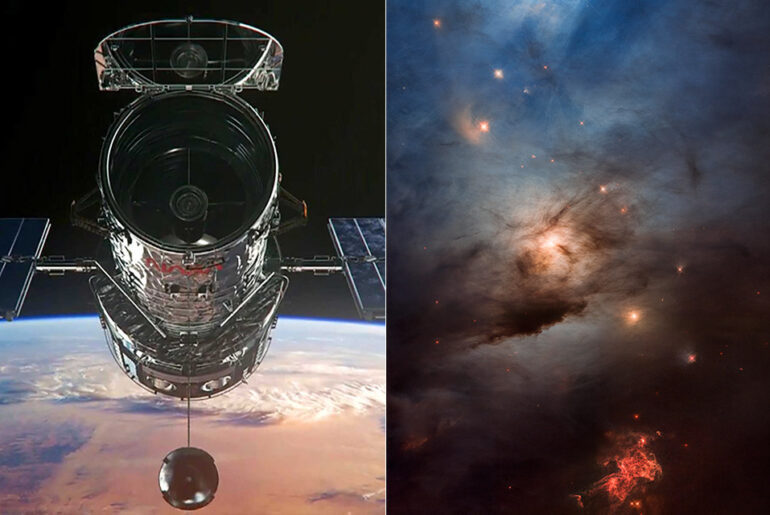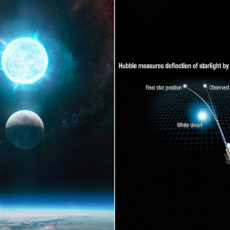
NASA / ESA’s Hubble Space Telescope commemorates its 33rd anniversary with an image of NGC 1333, a star forming region in the Perseus molecular cloud. Located approximately 960 light-years away, Hubble had to peer through a veil of dust on the edge of a massive cloud of cold molecular hydrogen.
The dark area where a reddish glow radiates is actually ionized hydrogen. This area may look like a fireworks show, but it’s caused by pencil-thin jets shooting out from newly forming stars outside the frame of view. These stars are encapsulated by circumstellar disks, which may eventually create planetary systems.
- LEGO NASA Space Set - This adult LEGO set features the Space Shuttle Discovery and the Hubble Space Telescope from NASA’s 1990 STS-31 mission,...
- Solar System Exploration - Unlock the mysteries of our solar system with this engaging 2,354-piece project, packed with authentic details and...
- Shuttle Features Galore - The space shuttle model has an opening payload bay, retractable landing gear, opening cockpit, moving elevons, space arm,...
This view offers an example of the time when our Sun and planets formed inside such a dusty molecular cloud, 4.6 billion years ago. Our Sun didn’t form in isolation but was instead embedded inside a mosh pit of frantic stellar birth, perhaps even more energetic and massive than NGC 1333,” said NASA.






